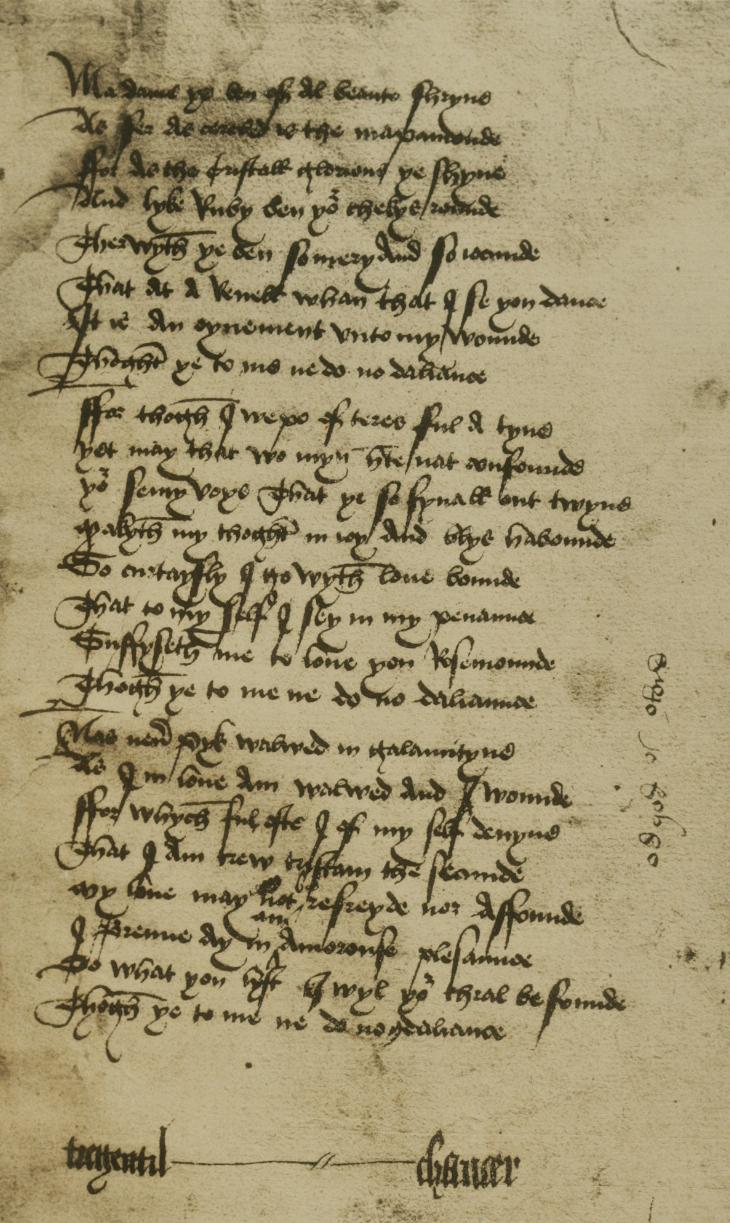For example, the Middle English “cercled” becomes “circled” in modern English, “jocounde” becomes “jocund.” Most of the Middle English words of The Canterbury Tales have been updated in this way; words no longer in current usage have been modernised to their most recent instances (for example, “refreyd” becomes “refreid”).
Throughout the translation no attempt has been made to modernise the “-en” word ending, which have mostly to do with tense, and can be largely dispensed with or ignored when starting out with reading Chaucer (for example, “weren” can be understood as “were,” “sleepen” as “sleep,” “longen” as “long”).
No offence is meant in the translation of any of the stories, which can become nasty in places.
It is recommended to view this site on desktop rather than on a smartphone; on desktop the translation is presented parallel with the original text, on smartphone screens only the translation is displayed.
It is also recommended to start with The General Prologue (the beginning of The Canterbury Tales), and read through Group A, rather than (or before) choosing random tales.
For a short read, try The Summoner’s Prologue.
Links to Wikipedia have been added to The General Prologue, and most of The Knight’s Tale, sometimes at the expense of the glossary in the subsequent stories.
Underlined words, when hovered over, present a definition or explanation, as demonstrated in the example below, Chaucer’s Ballade to Rosemounde.
ORIGINAL
Madame, ye ben of al beautè shryne
As fer as cercled is the mappemounde;
For as the cristal glorious ye shyne,
And lyke ruby ben your chekes rounde.
Therwith ye ben so mery and so iocounde,
That at a revel whan that I see you daunce,
It is an oynement unto my wounde,
Thogh ye to me ne do no daliaunce.
For thogh I wepe of teres ful a tyne,
Yet may that wo myn herte nat confounde;
Your seemly voys that ye so smal out-twyne
Maketh my thoght in Ioye and blis habounde.
So curteisly I go, with lovë bounde,
That to my-self I sey, in my penaunce,
Suffyseth me to love you, Rosemounde,
Thogh ye to me ne do no daliaunce.
Nas never pyk walwed in galauntyne
As I in love am walwed and y-wounde;
For which ful ofte I of my-self divyne
That I am trewe Tristan the secounde.
My love may not refreyd be nor afounde;
I brenne ay in an amorous plesaunce.
Do what you list, I wil your thral be founde,
Thoghe ye to me ne do no daliaunce.
Tregentil—-//—-Chaucer.
MODERN
Madame, ye been of all beauty shrine
As far as circled is the mappemonde;
For as the crystal glorious ye shine,
And like ruby been your cheeks round.
Therewith ye been so merry and so jocund
That at a revel when that I see you dance,
It is an ointment unto my wound,
Though ye to me ne do no dalliance.
For though I weep of tears full a tine,
Yet may that woe mine heart not confound;
Your seemly voice that ye so small out-twine
Maketh my thought in joy and bliss abound.
So courteously I go, with love bound,
That to myself I say, in my penance,
Sufficeth me to love you, Rosemounde,
Though ye to me ne do no dalliance.
Nas never pike wallowed in galantine
As I in love am wallowed and y-wound;
For which full oft I of myself divine
That I am true Tristan the second.
My love may not refreid be nor afound;
I bren aye in an amorous pleasance.
Do what you list, I will your thrall be found,
Though ye to me ne do no dalliance.
